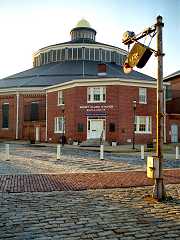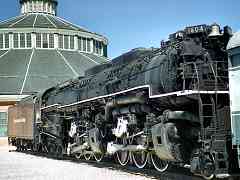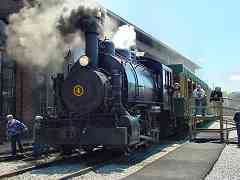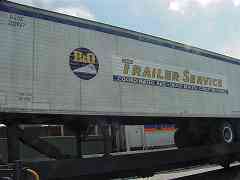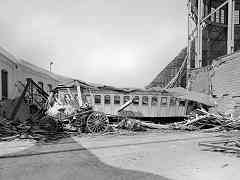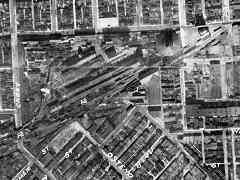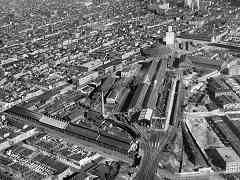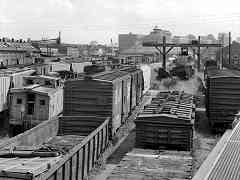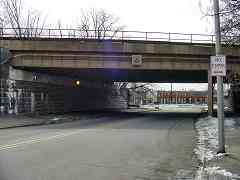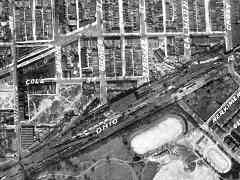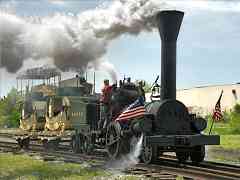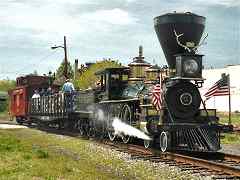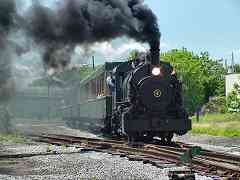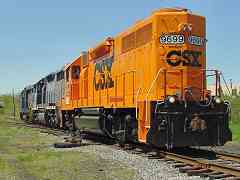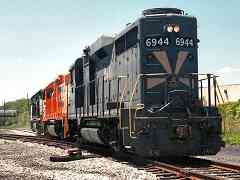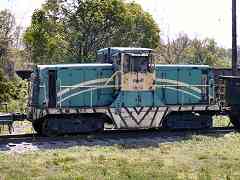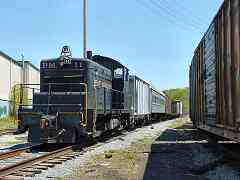|
This tour starts at Mt. Clare which is located about a mile west of the
center of the city of Baltimore, Maryland. B&O wanted to begin its
railroad downtown at the city's harbor, but wrangling over the exact
route delayed progress, so construction started near what was the
western edge of the active city in 1828. Over the century that followed,
Mt. Clare would evolve into a major terminal, with a large train yard,
car repair shops, locomotive construction facilities and even the
passenger station shown in this photo.
Mt. Clare is the second-oldest railroad station along the Old Main Line
(OML), younger than only the Ellicott City station we'll see later in this
tour. The station is now home to the B&O Railroad Museum. Behind
the station is the 1885 roundhouse that originally served as a car repair
shop. Now the structure houses the museum's impressive collection
of old locomotives. The B&O Museum is open most days, and is a highly
recommended stop for all railfans.
The 1936-dated photo linked below shows a plaque mounted on the
exterior of the building which reads, "This Building Erected 1830
is the first passenger and freight station in America and the oldest
in the world. At the time of its use, trains were pulled by horses
between Baltimore and Ellicott's Mills. Baltimore and Ohio, The
Pioneer Railroad of America, the cornerstone of which was laid by
Charles Carroll of Carrollton, July 4, 1828."
Other historical documents show this station building was actually
constructed around 1850. A passenger "shack" may have previously
occupied this spot, but other records place it a short distance west.
Link:
1975
|
